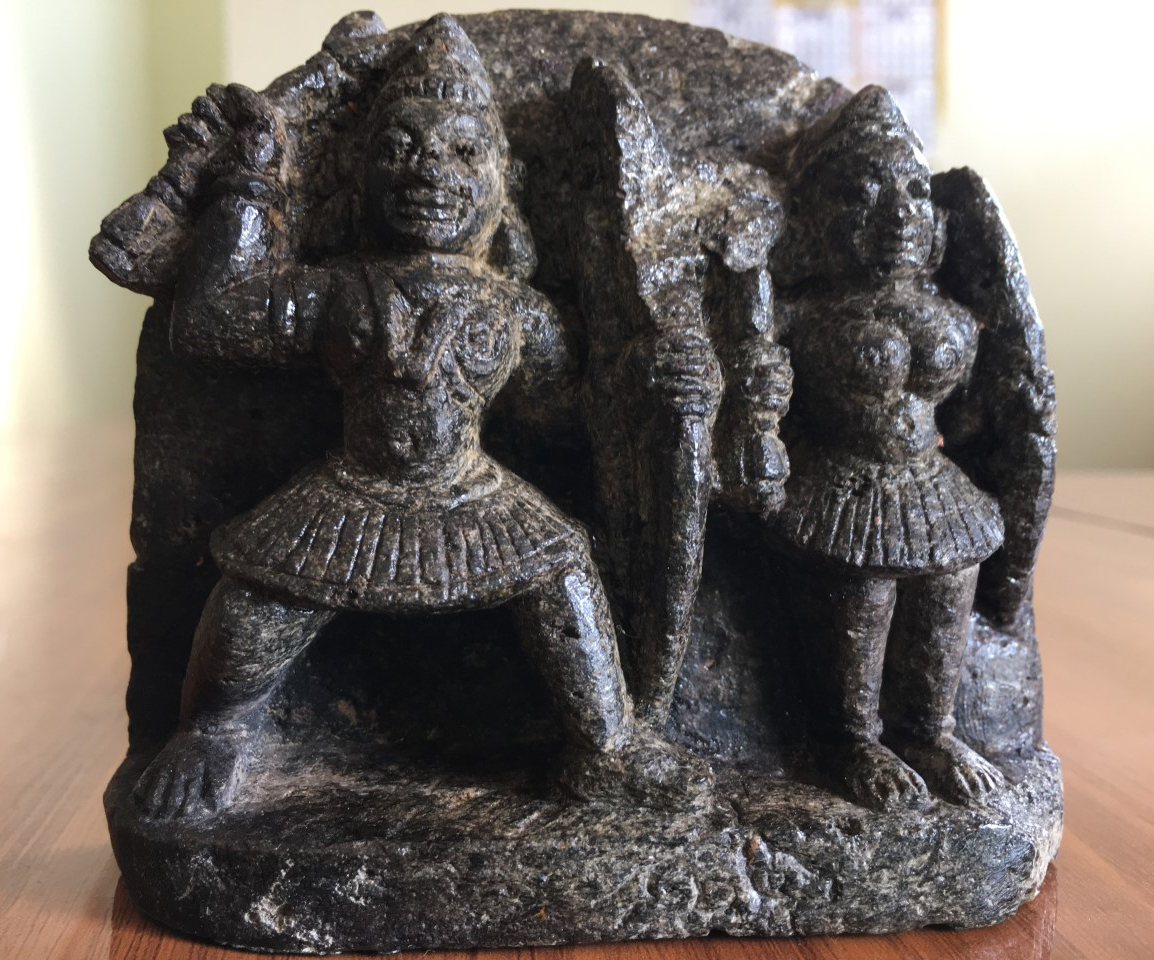
The sculpture of King Shivachitta Permadideva and his Queen Kamaladevi with hunting instruments at the Pilar Museum.
Photo Credits: Fr Elvis Fernandes
March 8 marks International Women's day and while we speak extensively about equality among men and women today, the ancient history of Goa also has instances of gender equality.
One such instance is during the early 12th century, when Goa was ruled by the Kadamba King Shivachitta Permadideva. His chief queen was Kamaladevi who descended from the ancient Pandyan family of the Somavamsa/lunar race, according to the Degamve (deagon) and other grants.
Model for family life: The Deagon grants testify to the fact that she was the centre of the love of King Shivachitta Permadideva. It also states she was the object of his respect as Rohini alone is more cherished by the moon than other stars. Women deserve not just love but respect from men. The love of Shivachitta Permadideva and Kamaladevi witnessed it.
Model for equality: She was described as the chief queen who treated subjects, both rich and poor, without discrimination.
Patroness of education: She was a great patron of learning. Kamaladevi, with the assistance of her husband, King Shivachitta, founded a number of agraharas. In these agraharas, Veda, Vedangas, Nyaya, Mimansa, Sankhya, etc were taught. One of such famous agrahara was made by her at Degaon near Belgaum.
In ancient India, a Brahmapuri was a higher educational institution. Subjects taught in the Brahmapuri included Vedas, Vedangas, astronomy, medicine and some arts and crafts. They also transmitted traditional knowledge and history (Purana and Itihas). It is also said this pious queen established the Brahmapuri in Ella (today's Old Goa) to foster education in her kingdom.
Model for religious charity, tolerance: The Saptakoteshwar was the family deity of the Kadambas. However, it was Queen Kamaladevi who constructed the Saptakoteshwar temple at Divar island in the mid-12th century CE. She also founded the Saptakoteshwar temple at Opa-Khandepar. Saptakoteshwar is the form of the deity Shiva. To the same deity, she is widely believed to have built the Mahadev temple at Tambdi Surla.
Tradition also associates the Kamaleshwar temple, Korgao with this pious queen. These facts illustrate her tremendous contributions towards Shaivism. Moreover, the foundation of Kamaleshwar temple at Borim is attributed to her and it is said that she installed the Navadurga idol there. She also built the Mahalakshmi at Degamave.
This illustrates her patronage of the Shakti worship. Moreover, she made the Kamalanarayan temple at Degaon near Belgaum, which is dedicated to the deity Vishnu. This shows her patronage for Vaishnavism too. The Kamal Basdi in Belgaum, dedicated to the Jain Thirthankara Neminath, was also constructed by this queen.
All these facts illustrate her religious charities and her great heart which accommodated various spiritual traditions. She patronised the theistic Shaivism as well as atheistic Jainism. Such a broad mentality is quite essential today.
Patron of Architecture: The eminent historian George Moraes wrote that the perfection of the Kadamba architectural style was evidently reached in the Sree Kamala-Narayana temple at Degamve. It was built by Tippoja, the architect, at the command of Queen Kamaladevi.
One of the landmark features of Queen Kamaladevi’s creations is the lotus (Kamal) pendant motif in the temples. The Tambdi Surla temple built by Queen Kamaladevi is considered to be the only specimen of Kadamba architecture in basalt stone preserved and available in Goa.
Model for administration: For the first time in Goa’s history, during the reign of King Shivachitta Premadideva, Queen Kamaladevi took active interest in the affairs of the State. When Queen Kamaladevi approached King Shivachitta with a request to found an agrahara at Degamve, he took counsel from his mother Mailalamahadevi. This illustrates how women played a prominent role in the Kadamba administration. Kamaladevi was the only queen of whom the Kadambas of Goa can boast of actively participating in the administration of the kingdom, practically sharing power with the king.
Athletic personality: Hunting is both a professional sport and casual hobby by many people across the globe. In Indian history, we rarely find women going for hunting games. The Pilar Museum has a sculpture, which was found while deepening a field well outside the compound. It shows a royal couple with hunting instruments, which is identified as King Shivachitta Permadideva and his Queen Kamaladevi.
Legacy: The life of Queen Kamaladevi is definitely a model for all women in Goa. Her life was filled with the patronage of education, religion and the welfare of her subjects. She is also a model of religious tolerance and pluralism. She illustrates what a woman can achieve in the political administration. Her athletic personality calls for greater participation of women in sports. She was also a great patron of architecture creating her own architectural motif.
We are not sure if she left any progeny because King Shivachitta Permadideva was succeeded by his brother, Vishnuchitta Permadideva. However, in the personality of the queen Kamaladevi, we find a mother who gave all her talents and capacities for the welfare of her Goan subjects.
It is sad that this virtuous queen is not known much and her contribution to Goan history is not well recognised and acknowledged. Honouring her memory is paying tribute to the contribution of women to the land of Goa.
(The writer is a Goa based research scholar based on the Carmelite congregation)